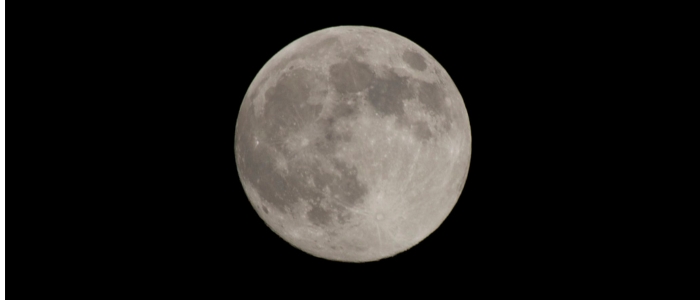The State We're In
Moonlit mysteries of New Jersey’s wildlife
By Alison Mitchell, Executive Director, New Jersey Conservation Foundation
A spectacular supermoon will reach peak visibility across the Northern Hemisphere this Tuesday, October 7th. During the celestial event, which occurs a few times a year, the moon will be at its closest point to Earth in its orbit, causing it to appear larger and brighter in the sky.
In addition to being a stunning display, we’ve long known that the moon controls the tides. Though relatively small, the moon’s gravity contributes twice as much to tidal pull as our massive sun because the moon is so close to Earth.
What’s especially interesting to contemplate is how animals might be responding to the rhythms of the moon.
When it comes to sustaining shorebirds, there’s a direct connection between the full moon and food supply. Enter the legendary Horseshoe crabs, which gather on New Jersey beaches every spring, right on cue with the full and new moons. This is when the tides are highest, creating the perfect environment for these ancient creatures to crawl ashore and lay their eggs. For migrating shorebirds like the endangered red knot, abundant crab eggs are a vital food source for the long trip to the arctic tundra. Some migratory birds are even thought to use the moon as a sort of natural compass to guide them on their journeys across continents and over oceans.
Sea turtles use moonlight to find their way back to the ocean after nesting. Of the five sea turtle species in the Atlantic, four migrate through New Jersey waters – all threatened or endangered. Their hatchlings also rely on the moon’s glow reflecting off the water to guide them towards the surf. A full moon rises and sets near dusk and dawn, creating even more reflection on the ocean to light the journey of these fascinating animals.
Shellfish are in on the act, too. In a study published in the Biology Letters journal, scientists found that oysters actually open and close their shells in rhythm with the moon. Full moon? Closed up tight. New moon? Wide open. Oysters even seem to notice the difference between the first and last quarter moons! While this phenomenon isn’t fully understood, it likely has to do with how the moon affects water movement and food availability.
Here on land, moonlight plays an important role in how nocturnal animals like foxes and raccoons communicate and behave. More light can make it easier to find food, with smaller animals more vulnerable to being spotted by predators.
Barn owls certainly use the moon for hunting advantage. Moonlight reflects off their white plumage and blends with the sky, making them nearly invisible to prey.
Scientists are still exploring all of this!
What we do know is that animals (especially coastal and marine species) have evolved alongside the moon for millions of years. Even humans are in sync with Earth’s rotation and the lunar cycle. We are animals too, after all! While sunlight is the main signal that guides our daily rhythms, moonlight also affects our nocturnal activity and sleep. And in 2024, scientists at the University of Lyon published a study in Science Advances revealing a significant correlation between the length of the human menstrual cycle and the 29.5-day lunar phase cycle.
So when you look up at the supermoon this week, take a moment to wonder what else is happening out there in the water, in the woods, and overhead. You won’t be the only species paying attention to that powerful shining light in the sky. The science suggests we’re all moonstruck!
To learn more about how you can help preserve New Jersey’s natural resources, visit the New Jersey Conservation Foundation at www.njconservation.org or reach out to us at info@njconservation.org.
About the Authors
Alison Mitchell
Executive Director
Michele S. Byers
Executive Director, 1999-2021
John S. Watson, Jr.
Co-Executive Director, 2022-2024
Tom Gilbert
Co-Executive Director, 2022-2023
View their full bios here.
Filter
Get The Latest News
From The Garden State
In the
News

